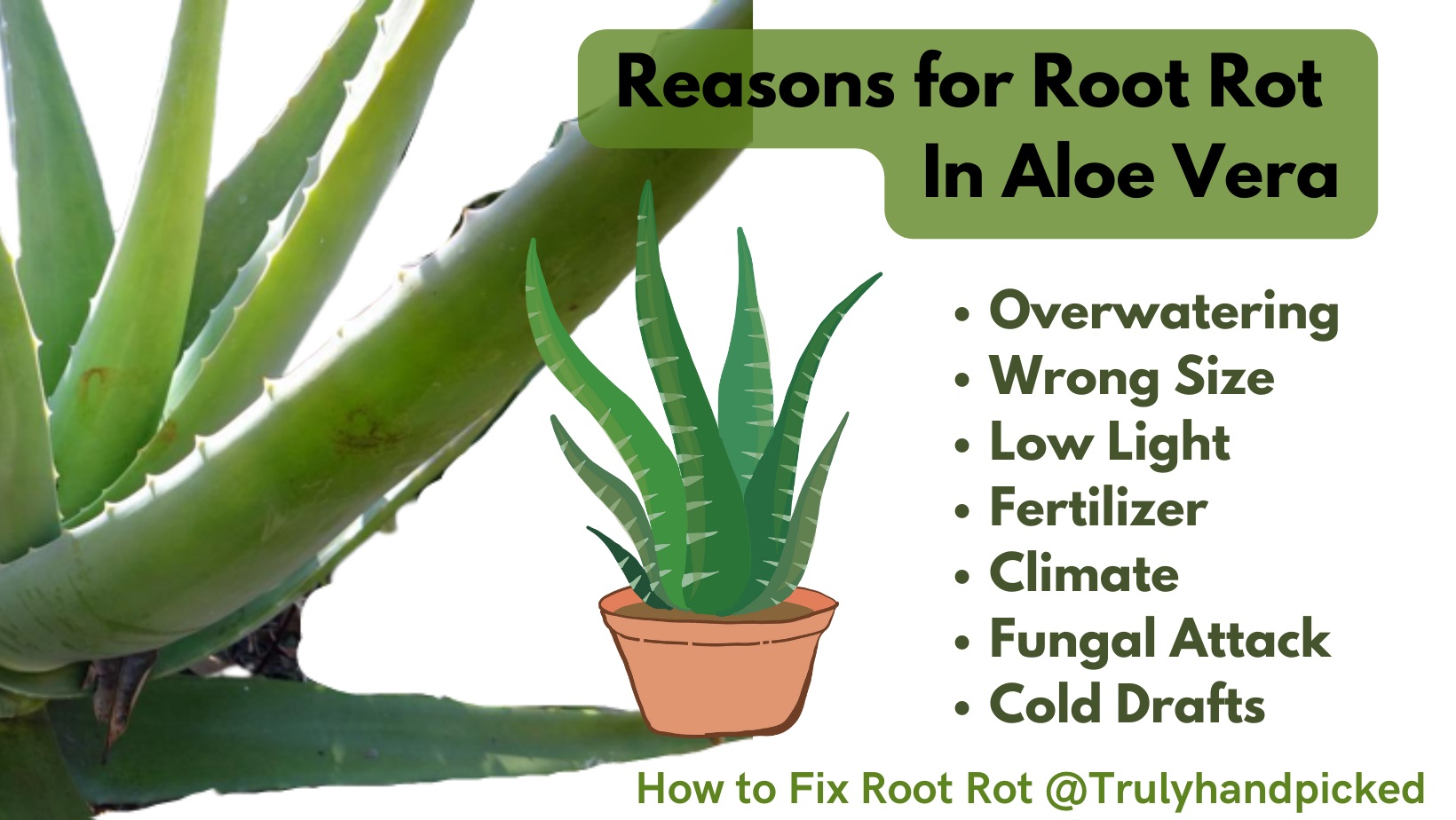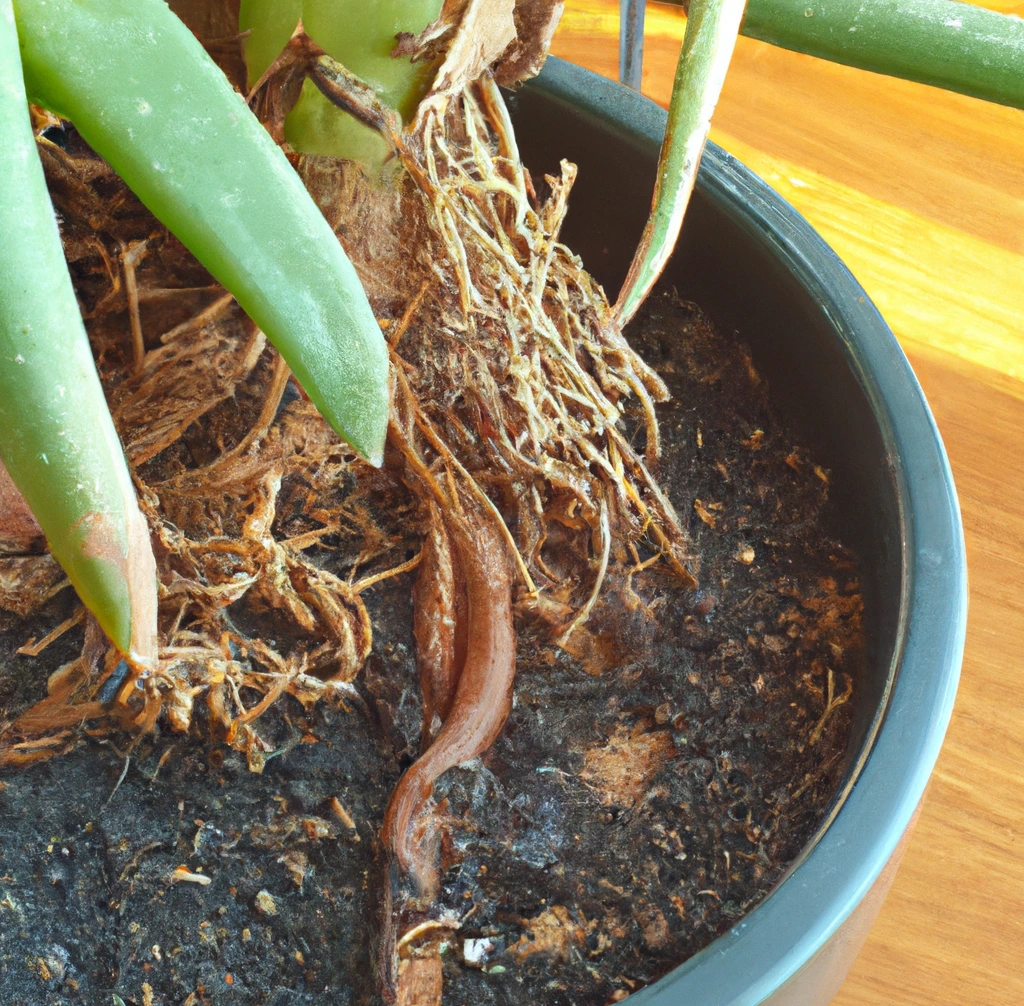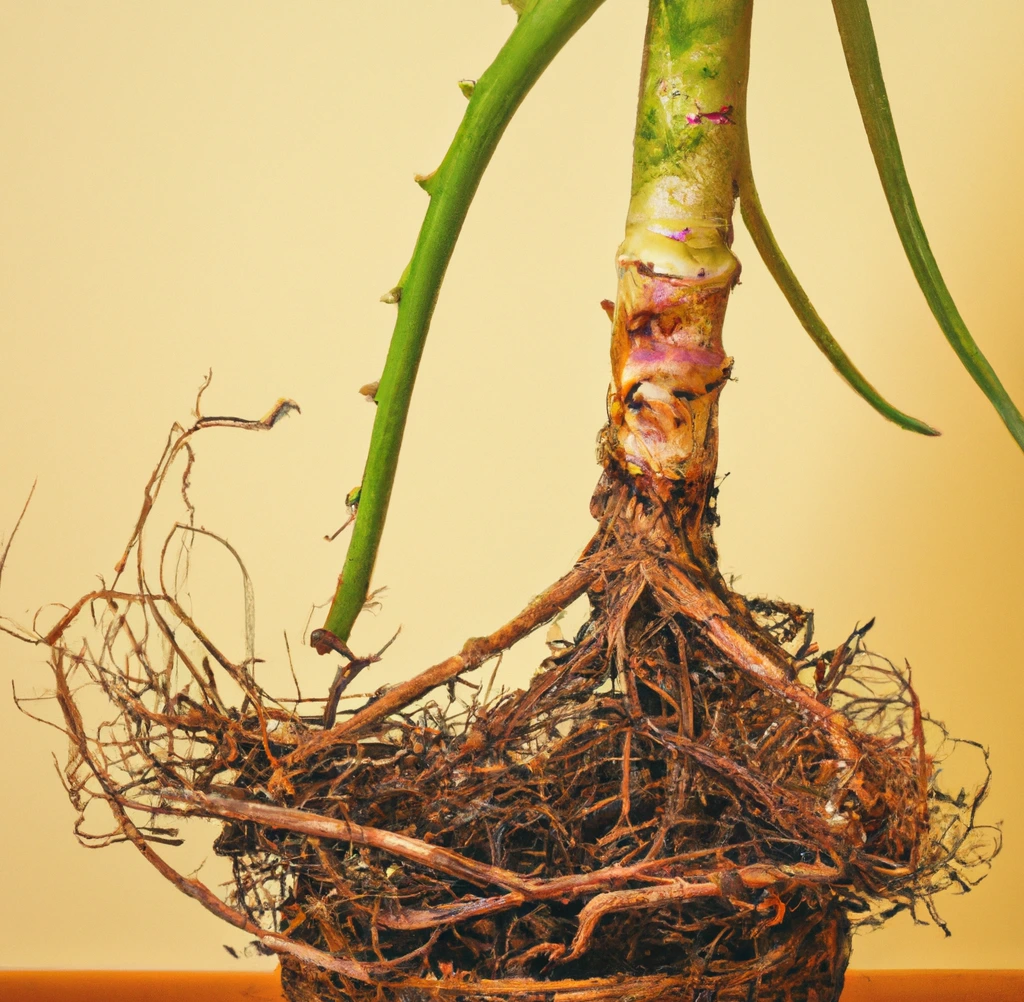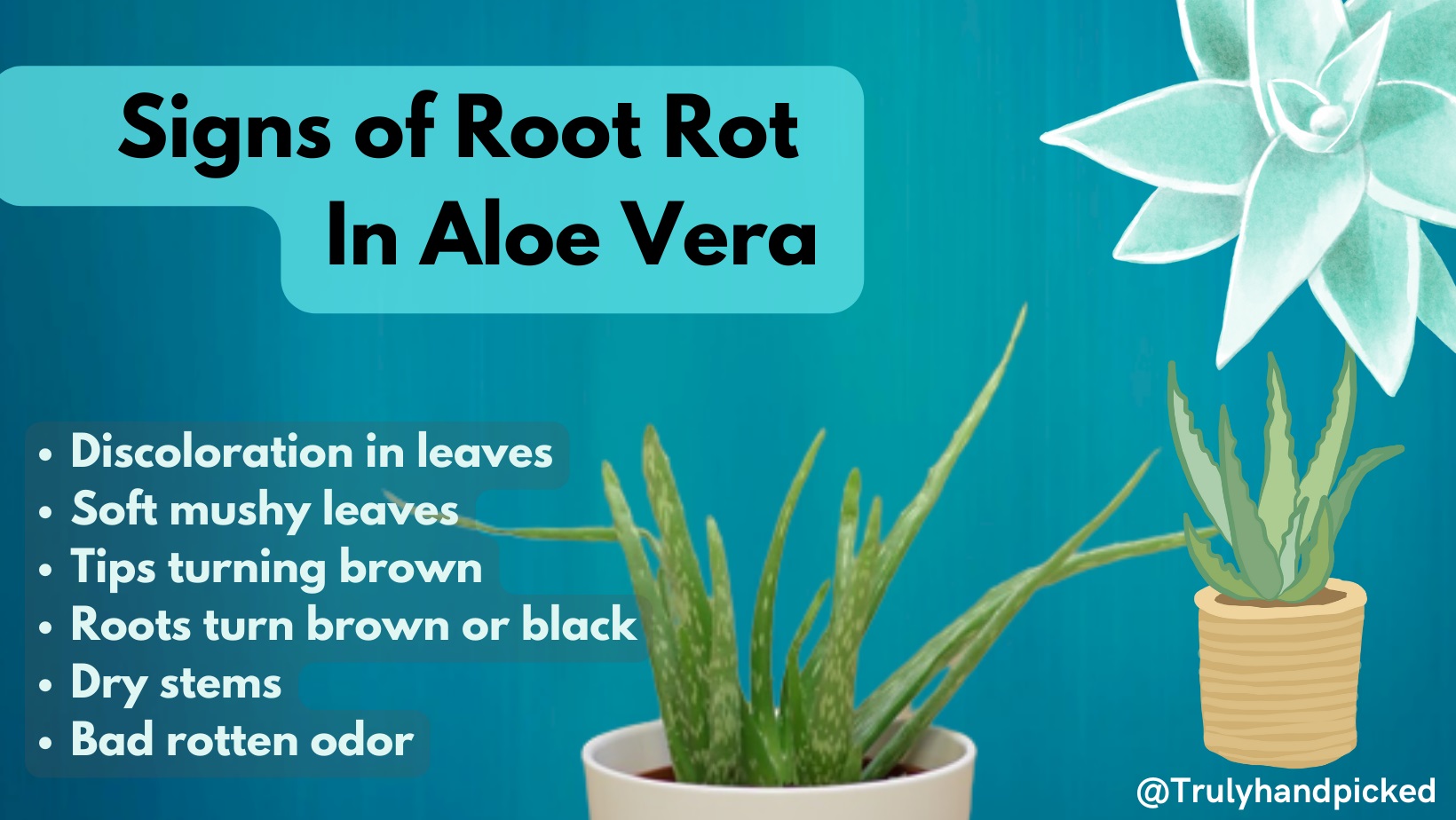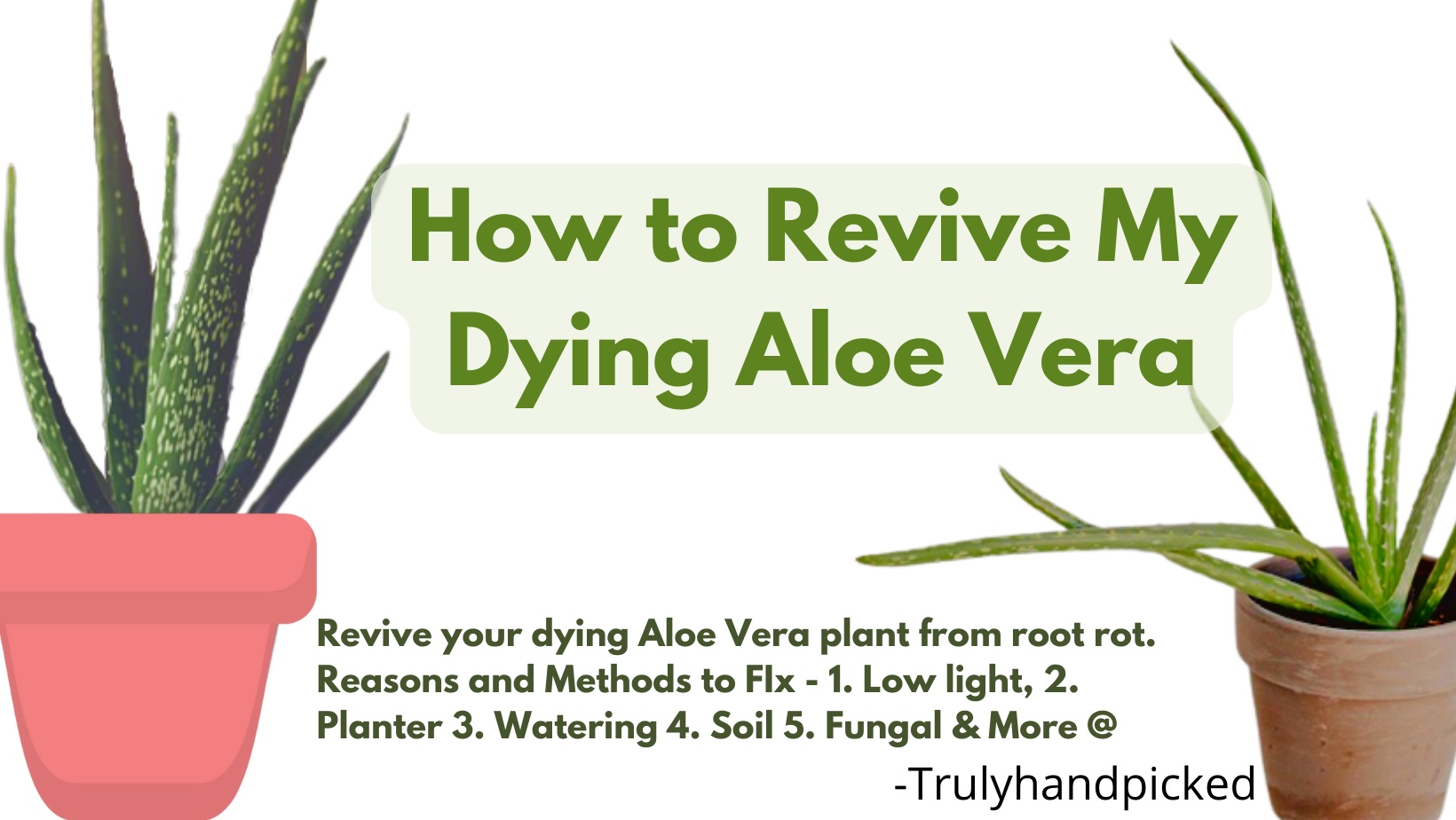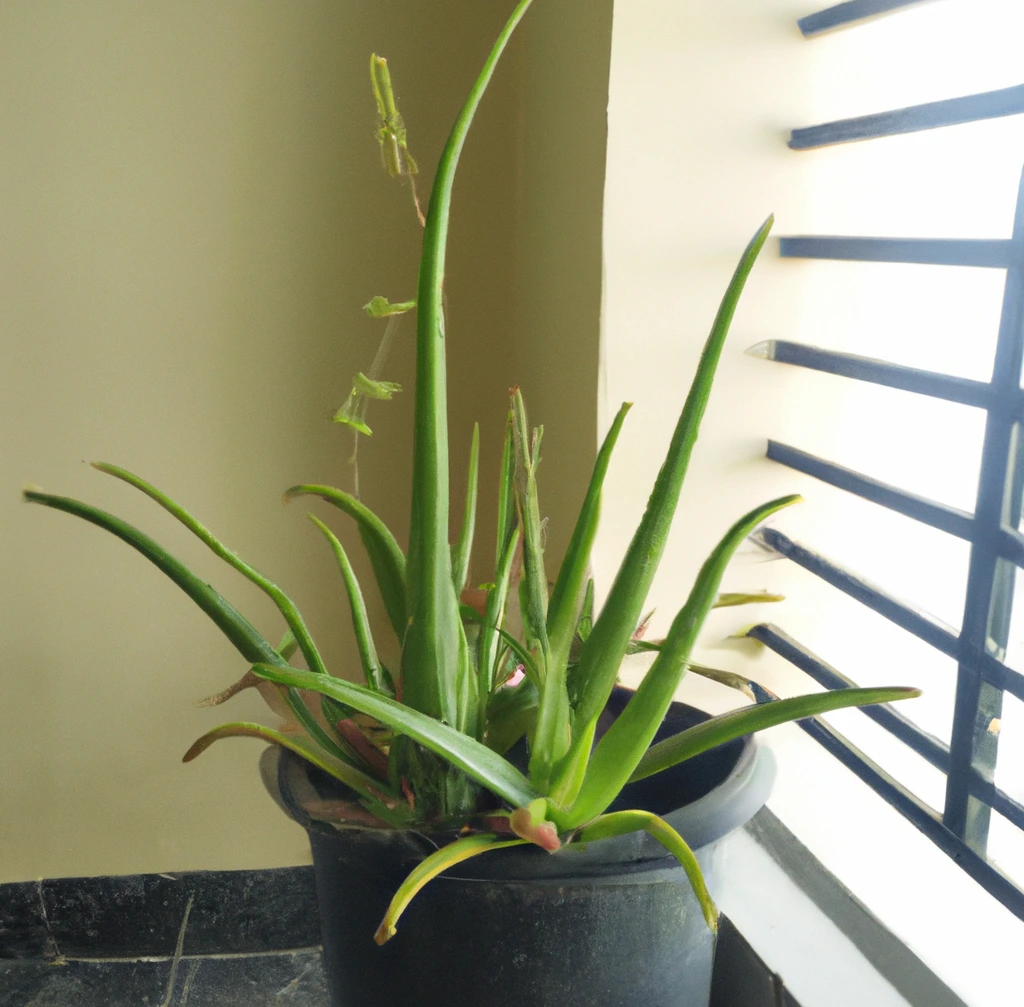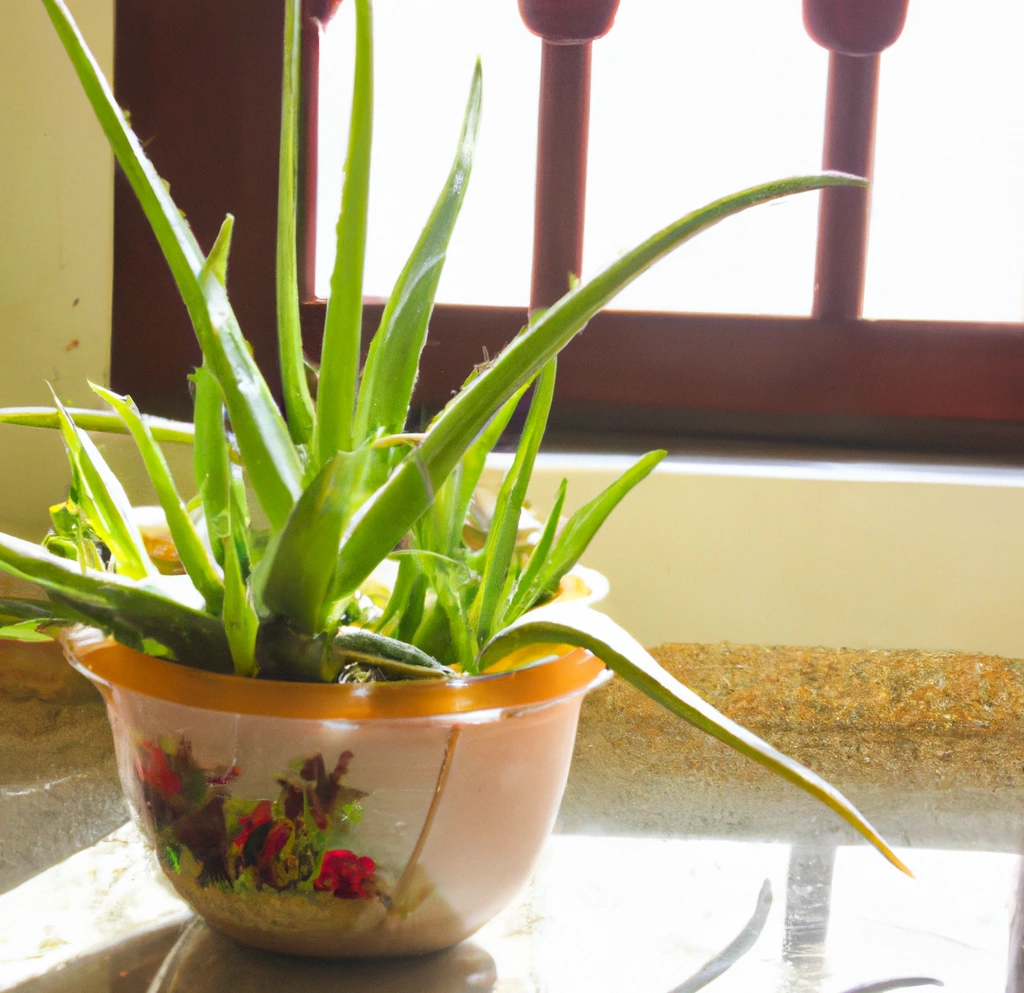Aloe vera is undoubtedly a magnificent herb with some magical properties. Its easy-to-maintain excellence makes this one a quick pick for plenty of indoor gardeners.
However, sometimes, a few misconceptions in their caring regimen could drive root rot in your favorite plant.
Cherished aloe vera, a resilient symbol of nature’s wonders, facing an invisible adversary that strikes from beneath.
In this guide, we unveil the concealed dangers of root rot that could be threatening your thriving succulent haven. From its subtle beginnings to the dramatic stakes, we’re here to equip you with the wisdom and strategies needed to defend your aloe vera’s health.
Let’s unearth the mysteries of root rot together and ensure your aloe vera shines bright,
Reasons for Root Rot in an Aloe Vera Plant:
Root rot occurs when the roots of the plant are damaged by excess moisture, poor drainage, or fungal infections. Here’s a comprehensive guide on the various causes of aloe vera root rot:
How does a plant look with root rot
Reasons for Root Rot:
- Overwatering: One of the primary culprits behind root rot is overwatering. Aloe vera prefers dry conditions and is adapted to store water in its leaves. When the soil remains consistently soggy, the roots suffocate due to a lack of oxygen, making them susceptible to rot.
- Poor Drainage: Inadequate drainage in the potting soil can lead to water accumulation at the bottom of the pot. This excess moisture creates an environment conducive to root rot development.
- Incorrect Soil Type: Aloe vera requires well-draining soil that replicates its native habitat. Using heavy or compacted soils that retain water can impede drainage and result in root rot.
- Improper Pot Size: Planting your aloe vera in a pot that is too large can lead to water retention around the roots. Ideally, the pot should be proportionate to the size of the plant and have drainage holes.
- Infrequent Repotting: Over time, the potting mix can break down and become compacted, hindering drainage. Repotting your aloe vera every couple of years with fresh soil helps prevent root rot.
- Fungal Infections: Fungal pathogens thrive in excessively moist conditions. If your aloe vera’s roots come into contact with infected soil or if the plant is exposed to high humidity, it can develop fungal infections that weaken the roots and contribute to root rot.
- Cold and Damp Conditions: Aloe vera is sensitive to cold and wet environments. If it’s exposed to chilly and damp conditions for prolonged periods, the roots can suffer damage and become susceptible to rotting.
- Overcrowding: Planting multiple aloe vera plants too closely can lead to poor air circulation and increased moisture around the roots, increasing the risk of root rot.
- Contaminated Tools: Using contaminated gardening tools can introduce pathogens to your aloe vera’s root system, leading to infections and subsequently root rot.
- Lack of Sunlight: Inadequate sunlight can weaken the aloe vera plant and make it more susceptible to diseases, including root rot. Proper sunlight exposure helps maintain the plant’s overall health and vitality.
- Over Fertilization:
Sometimes feeding your aloe vera plant more than its actual requirements could lead your plant towards root rot. If you fertilize a growing plant more than its needs, the excess food will build up in its roots and gradually congest the way that passes nutrition to the plant. Remember that commercial and organic options are equally harmful to the overfertilization of a plant.
- Improper Climate:
One more valid reason for root rot in an aloe vera plant is improper or unsuitable climate. It means, that if you keep the planter in a place, where your aloe vera plant couldn’t get enough humidity and adequate temperature along with proper sunlight, it is called improper climate. This kind of climate often drags your growing plant to the consequence of root rot unavoidably.
Signs of Root Rot in Your Aloe Vera Plant:
Aloe vera plants always give vivid and apparent signs of root rot with some clear hints. Try to recognize those symptoms of root attentively at their primary stage. If you can detect them quickly and apply the remedies in time, it will be more effortless for you to revive your plant with some simple changes.
Here are some basic signs you could validate to find whether your growing aloe vera plant is having root rot issues-
- Discoloration in leaves
- Soft mushy leaves
- Tips turning brown
- Roots turn brown or black
- Dry stems
- Bad rotten odor
How to Revive/Fix Your Aloe Vera Root Rot:
Root Rot in Alovera – Quick Overview of Solutions
- Water Wisely: Allow the soil to dry out completely between waterings. Stick your finger into the soil up to your knuckle – if it’s dry, it’s time to water.
- Use Well-Draining Soil: Choose a cactus or succulent potting mix or create your own by adding sand or perlite to improve drainage.
- Opt for the Right Pot: Select a pot with drainage holes and an appropriate size for your plant.
- Provide Adequate Sunlight: Place your aloe vera in a location that receives bright, indirect sunlight.
- Monitor Humidity: Ensure proper air circulation and avoid excessively humid conditions.
- Practice Good Hygiene: Sterilize tools and pots before use to minimize the risk of introducing pathogens.
Steps to Treat and Save a Root Rot Aloe Vera Plant
Provide Enough Lighting:
Once you feel that your aloe vera plant is not thriving, try to bring it out in a bright area full of direct sunlight. Keep your plant at that spot for 24 hours constantly. It will resolve the minor problem, and at the same time, help you to recognize the root rot issues proficiently.
Trim Down Infected Roots:
Once you are sure that your aloe vera plant has a root rot issue, try to drag out the plant from its current planter immediately, and cut off the infected part right away. Always do this step with a fully sterilized pruner or cutter to avoid any kind of infestation further.
Repot Your Plant Immediately:
To give your plant a second chance to grow healthily, you must clear all its previous growing mediums and create a whole new setup instantly. You should remember here that the prevention of root rot would have worked more effectively, as soon as you could have done the replantation process.
Choose Your Planter:
Picking the perfect pot for planting or replanting an aloe vera plant is a significant step to keeping your plant safe from root rot. So, try to pick a container that is only 1-1.5 inches bigger than the root size of your plant. Make sure it has some clear drainage holes and they are working properly as well.
Choose the Right Soil Mix:
Prepare a potting mix combining 3 parts of fully fertile potting soil, 2 parts of pebbles or sand, and 1 part of perlite. This could be the most preferable potting mix to grow an aloe vera plant without any kind of rooting issue. This sort of growing medium helps to keep the drainage process uninterrupted till the end.
Watering Schedule:
Aloe vera plants need moderate yet consistent watering. Try to water your plant once every 1-2 days with ½ inches deep watering or wait till the top surface of the soil turn 60% dry between watering. Always avoid watering your aloe vera plant for 1-2 weeks after repotting it properly.
Fertilize Only As Per The Schedule:
Feed your aloe vera plant only once a month with any balanced liquid fertilizer. Do not over-fertilize your plant ever, if you want to avoid any kind of root issues in the near future. Apply commercial succulent fertilizer in diluted form with a 10-40-10 ratio according to the right schedules.
Provide The Best Suitable Climate:
Place the planter of your newly potted or repotted aloe vera plant in a spot where it can get bright and direct sunlight for 8-10 hours a day. Make sure the spot has a moderate humidity level with a consistently warm temperature. Maintain the growing temperature between 55° to 80° F for the healthy roots.
Go for The Plant Rotation:
Plant rotation is another smart move to keep your aloe vera plant away from the grasp of root rot. Sometimes, keeping your plant in the same spot the same year could cause some unhealthy circumstances. Try to change the spot of the planter every year considerably.
Visit Her Frequently:
Apart from these hacks, you should give your plant a regular visit frequently just to stay updated. This way you can keep an eye on any type of pest or fungi infestation and at the same time catch the signs of root rot at its firstest sign. Proper and consistent validation of your growing aloe vera plant will also reward you with a successful planting experience at the end.
FAQ on Aloe Vera Root Rot
1. What is root rot in aloe vera, and why is it a concern? Root rot is a condition in which the roots of aloe vera plants deteriorate due to excessive moisture, poor drainage, or fungal infections. It can quickly lead to the plant’s decline and death if not addressed promptly.
2. How can I tell if my aloe vera plant has root rot? Signs of root rot include wilting or yellowing leaves, a foul smell from the soil, mushy and discolored roots, and the plant becoming loose in its pot. If the plant’s leaves start drooping despite proper care, it might be suffering from root rot.
3. What causes root rot in aloe vera plants? Root rot can be caused by factors such as overwatering, poor drainage, using incorrect soil type, using pots that are too large, fungal infections, cold and damp conditions, overcrowding, contaminated tools, and lack of sunlight.
4. How can I prevent root rot in my aloe vera plant? To prevent root rot, follow these tips:
- Water the plant only when the top inch of the soil is dry.
- Use well-draining soil and a pot with drainage holes.
- Choose a pot size appropriate for your plant’s size.
- Ensure proper air circulation and sunlight exposure.
- Sterilize gardening tools and pots before use.
5. Can I save aloe vera plants affected by root rot? Yes, if caught early, you can save aloe vera plants affected by root rot. Remove the plant from the soil, trim away affected roots, and let the plant’s roots dry out for a day. Then, repot the aloe vera in fresh, well-draining soil and adjust your watering routine.
6. Can I treat root rot with fungicides? Fungicides can be used to treat root rot caused by fungal infections. However, it’s important to address the underlying cause of the root rot as well, such as improving drainage and adjusting watering habits.
7. How often should I repot my aloe vera plant to prevent root rot? Repot your aloe vera every couple of years to refresh the soil and ensure proper drainage. Choose a slightly larger pot if the plant has outgrown its current container.
8. Can root rot spread to other plants? Yes, root rot can spread to other plants if the same contaminated tools or soil are used. It’s crucial to practice good hygiene and isolate affected plants to prevent the spread of the disease.
9. Is it better to underwater or overwater aloe vera to prevent root rot? It’s better to underwater than to overwater aloe vera plants. They are adapted to survive in arid conditions and can tolerate dry spells better than consistently moist soil.
10. Can I save an aloe vera plant with severe root rot? Saving aloe vera plants with severe root rot can be challenging. If a significant portion of the roots is affected, the chances of recovery decrease. However, you can still attempt to save the plant by trimming away damaged roots, treating it with fungicides, and providing optimal care conditions.
